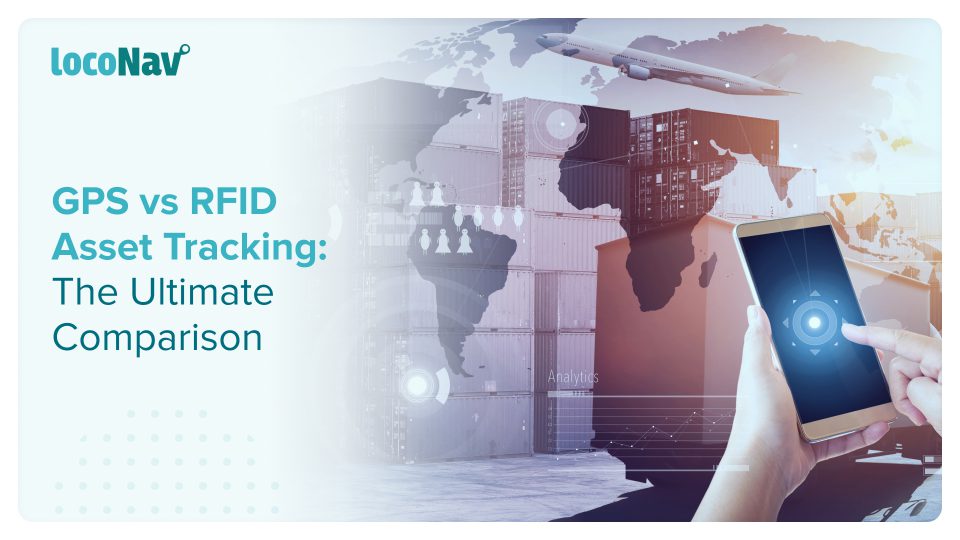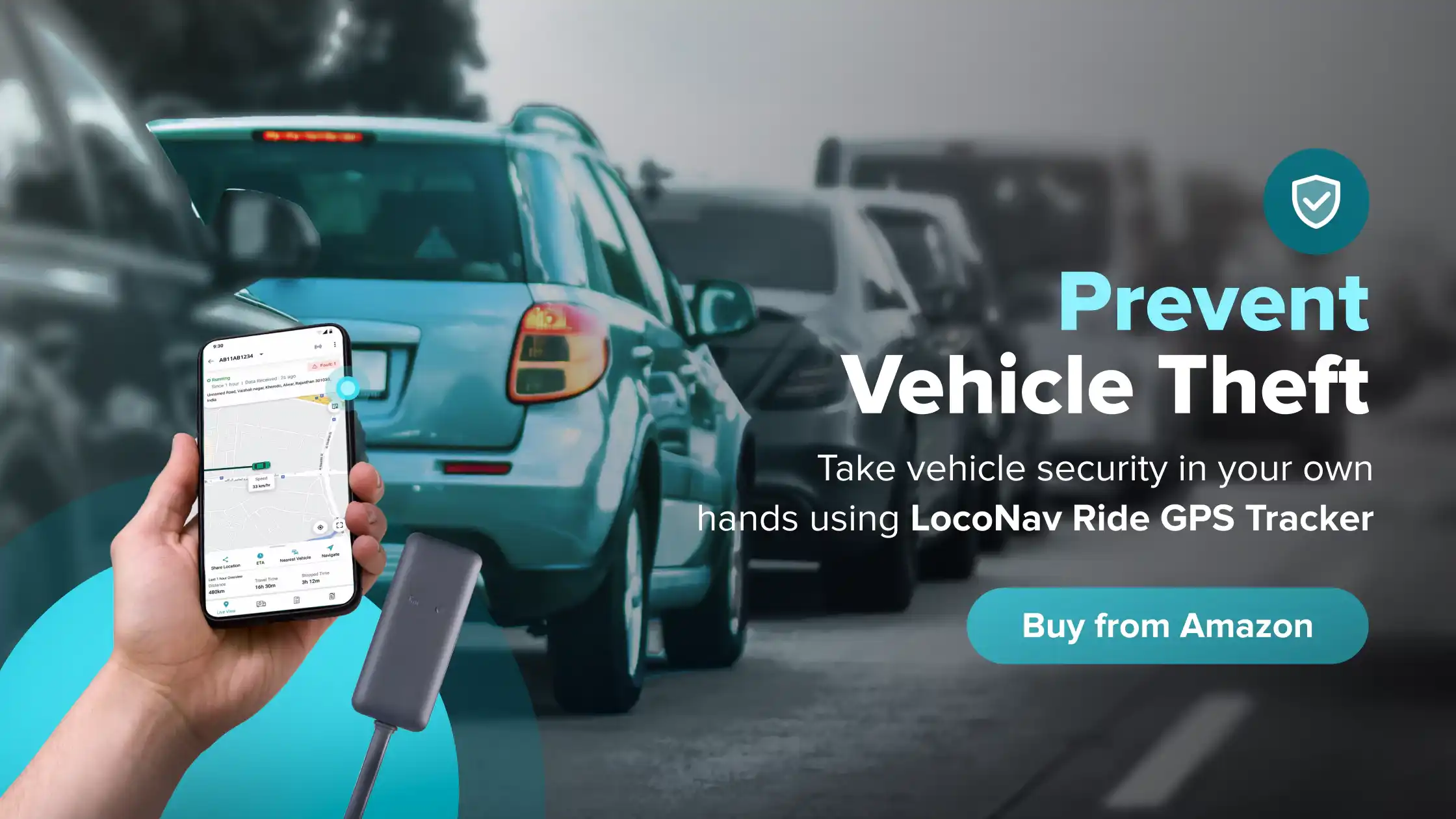

Considering the fiscal year 2019, the number of registered vehicles across India is over 295 million. This obviously means that there are a lot of vehicles on the road. If you own a fleet or are planning to start a fleet-based business, asset tracking is difficult yet crucial.
However, if your company is to prosper, this is a must. After all, your vehicles are one of your most valuable assets, and you cannot risk losing them or the cargo they transport. Luckily, there is now a simple way to monitor all of your vehicles, whether they are on the road or at your depots.
Asset tracking allows you to remotely monitor all your vehicles and cargo. Asset Tracking Systems are mainly of 2 kinds: RFID Asset Tracking System and GPS Asset Tracking System. Considering how important asset tracking is, it is a good idea to evaluate all available options before you deploy a solution. Therefore, in this blog we will discuss:
Check the live location of your assets with LocoNav’s Asset Tracking System!
- what an RFID asset tracking system is,
- the various types of RFID asset trackers available in the market,
- GPS vs RFID asset tracking, and
- how you can use a combination of GPS & RFID asset tracking.
What is an RFID Asset Tracking System?
As a company that depends on the availability of high-value assets to bring in income, you realise the significance of asset tracking and good inventory management. Facilitated by the sudden boom of IoT, RFID or Radio-Frequency Identification technology has become a regular part of effective asset tracking.
RFID asset tracking is a technique for automation of the management and location of physical assets. It operates by putting data onto an RFID tag and linking it to a relevant asset. An RFID reader can retrieve the stored data via an RFID tag. Eventually, it will be collected in a comprehensive asset tracking system where it can be watched and acted upon.
The capacity to automate your tracking and monitoring operations seeks to eliminate the highly mistake-prone manual methods of pen-and-paper and excel spreadsheets.
What Types of RFID Trackers are Available in the Market?
RFID asset tracking is classified into three types: passive, semi-passive, and active. These categories describe how RFID tags broadcast data and how close you must be to detect their signals.
- Active tags employ an onboard transmitter and a built-in battery to send out intermittent electromagnetic signals.
- Passive RFID tags send or’reflect’ a signal that a passive RFID reader sends to them.
- Semi-passive tags have a battery, so they have enough power for extra functions, but no onboard transmitter.
Should you Consider RFID Asset Trackers Over GPS Asset Trackers?
While the choice between GPS vs RFID Asset Tracking primarily depends on your personal requirements and usage, here are 2 important criteria to consider before you make the decision.
GPS vs RFID Asset Tracking – Energy Consumption
- GPS Asset Tracking Systems are fairly energy intensive. Once the GPS has determined the location of the “asset,” it must communicate that information, which consumes a significant amount of energy. To deal with this energy depletion, GPS-based locating systems are frequently powered by the vehicle’s battery (in vehicular/moving equipment use cases).
There are some inventive ways to conserve power when broadcasting through GPS, but most of them entail the GPS gadget sleeping in between messages. This enables the device to send its starting and ending positions but not its path.
- RFID Asset Tracking Systems, on the contrary, consume less power. Passive RFID system tags do not require any power, but active RFID systems, use low-energy tags. RFID readers are either powered by D batteries or connected to AC power, which provides an abundant energy supply.
GPS vs RFID Asset Tracking – Commercial Uses
- GPS Asset Management Systems such as LocoNav allow you to track the location of assets in real-time. Another advantage GPS trackers offer over RFID tags is the ability to geofence. LocoNav’s GPS Asset Tracking can lessen the danger of vehicle theft by equipping you with instant alerts as soon as a GPS tag departs from its intended location.
- RFID Asset Tracking allows for greater automation. RFID tags do not require a direct line of sight, therefore they can be used to track high-value goods. This provides a possible advantage over GPS tracking, as GPS trackers are big and may not be the greatest option if you are tracking expensive wine bottles, paintings, or any other small but valuable object.
GPS vs RFID Asset Tracking – Suitable Industry
- If you work in healthcare and need to track hospital assets or any other industry that requires asset management within its premises, for example, RFID asset tracking will be more useful because your assets are unlikely to leave the hospital frequently. If they are being loaded onto an ambulance, you will be able to utilise fixed RFID to keep track of the ambulance’s supplies while it is on the go.
- If you work in the construction business or a similar industry, GPS tracking may be more beneficial to you because theft on building sites is a major issue. Because theft in this situation will cause the asset to be far away from the site, using GPS tracking gives you a better ROI.
How can GPS & RFID Technology Be Used Together to Optimize Asset Management?
When most people think of GPS technology, they envision the GPS gadgets in their vehicles or phones. Asset tracking with GPS technology, on the other hand, is becoming far more common. GPS tags or receivers are now available for big asset tracking applications such as freight, shipping containers, or machinery.
Although active RFID does not have the extreme read range that GPS tags do, it works effectively for applications that entail tracking products in a fixed location such as a laydown yard or across different warehouses.
GPS and RFID technology can be successfully integrated to create a smart asset tracking system. Together, these two technologies provide businesses with greater visibility from GPS as well as identification specificity from RFID.
FAQ
How accurate are RFID locations?
The location accuracy of an RFID system is determined by the type of RFID system in question. Because active tags transmit their information like a cell phone, read accuracy is usually 100 per cent. Passive tags can be interfered with, and if the signal is obstructed by metal, so its accuracy is comparatively lesser.
What are the issues with RFID tracking?
RFID is vulnerable to two major problems:
- Reader collision, which occurs when a signal from one RFID reader interferes with a signal from another, can be avoided by employing an anti-collision protocol that requires RFID tags to alternate broadcasting to their respective readers.
- Tag collision occurs when too many tags provide data to an RFID reader at the same time. This problem can be avoided by using a reader that collects tag information one at a time.
Can RFID replace GPS trackers?
While GPS has a higher installation and operational cost, it also comes with impeccable accuracy, real-time tracking, and an unlimited range. So the answer is no, RFID cannot completely replace GPS Trackers.
